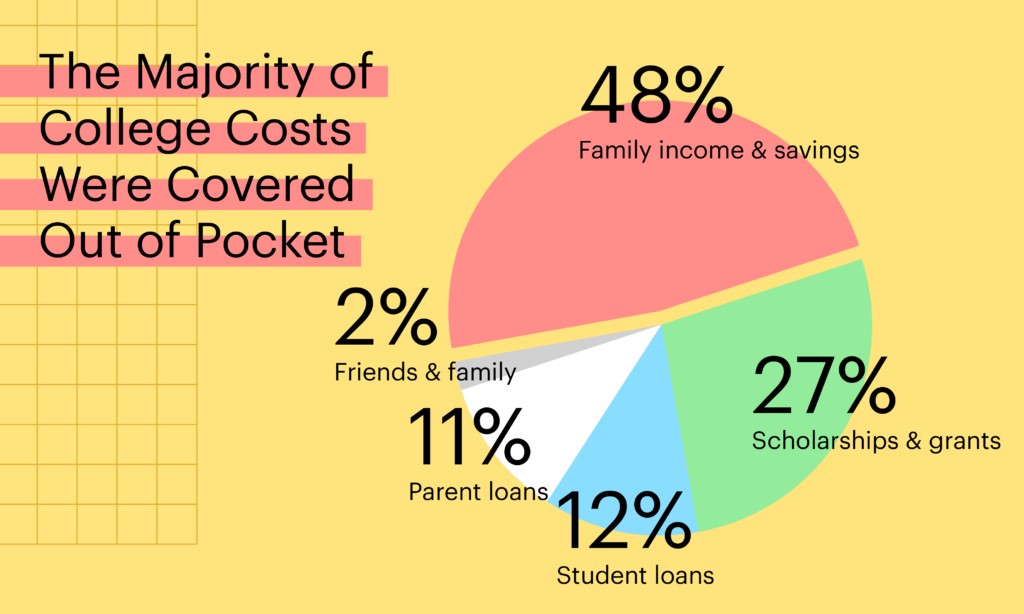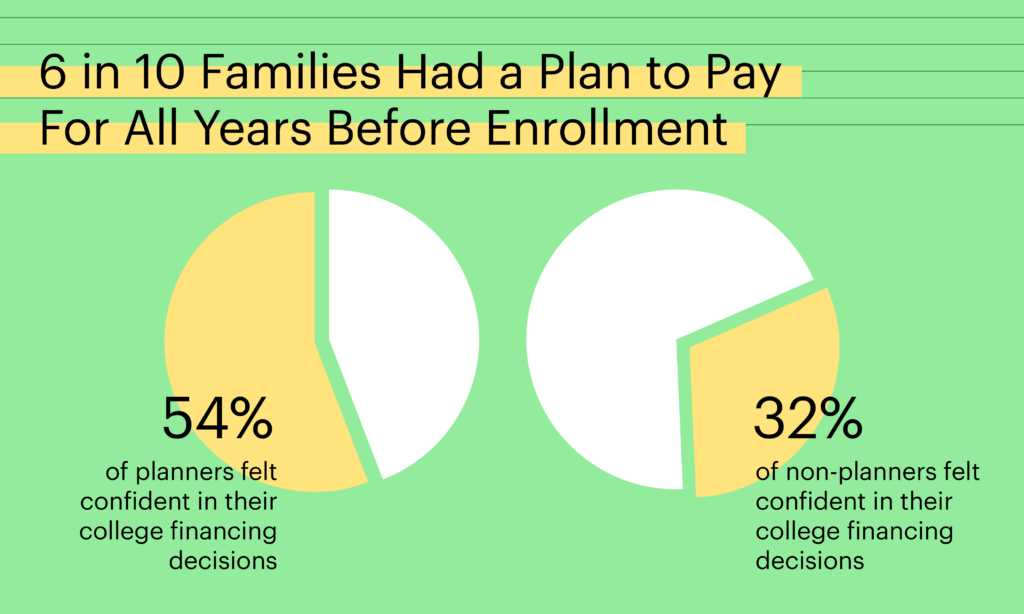
09.04.2024
How America Pays for College 2024
Education solutions company and responsible private lender Sallie Mae and research firm Ipsos® released How America Pays for College 2024, which provides key insights into how current undergraduate students and parents of undergraduates view higher education and how they plan and pay for it. This industry-leading research considers education funding sources – from parent and student income and savings to scholarships, grants, and borrowed funds – and evaluates trends in payment strategies over time.
From planning to paying, learn how families are navigating their unique higher education journeys.
Surveyed:
- 1,000 parents of undergraduate students (ages 18-24)
- 1,000 undergraduate students (ages 18-24)
- 349 undergraduate students (ages 18-24) from Historically Black Colleges and Universities (HBCUs)
College Spending Holding Steady
Families reported spending $28,409 on average this past academic year – in line with $28,026 in 2022-23. Students attending HBCUs spent an average of $28,545 in the academic year 2023–24.
The majority — 48% — of college costs were covered by family income and savings, followed by scholarships and grants (27%), borrowing 23% and funds from friends and family (2%).

Impact of FAFSA® delays
Seventy-four percent of families submitted the Free Application for Federal Student Aid (FAFSA®) for the 2023-24 academic year — marking a steady increase year over year. However, for those who reported completing the new FAFSA for the 2024-25 academic year, just 29% found the new application easier to complete.
Of those who experienced a delay, 44% reported experiencing stress waiting for financial aid decisions, 21% sought out additional financial aid options, 14% considered switching to a lower-cost school, and 10% transferred schools.
Borrowing is up for students and families.
Parents of HBCU students reported significantly higher balances for Federal Parent PLUS loans on average than families at non-HBCU schools: $14,207 vs. $5,795.
Roughly half of students who borrowed (48%) expect their federal loans to be forgiven; Just 40% of families who borrowed discussed who would be responsible for paying back student loans.
Scholarships can drive college access but misconceptions persist.
Scholarships were used by 64% of families, most of whom cited that scholarships made it possible for their students to attend college. On average, families reported receiving $8,250 in scholarships from their schools.
More than half of families (52%), however, believe scholarships are only available for students with exceptional grades or abilities. 50% of families who didn’t apply for scholarships cited lack of awareness.
To connect more students and families to scholarships, Scholarship Search by Sallie easily finds and sorts through hundreds of available scholarships.
Having a plan to pay makes a difference and boosts confidence.
Nearly 6 in 10 (59%) of families had a plan for how to pay for all years of college before enrollment — a more than 10% increase in 5 years — with higher income families more likely to have a plan.
More than half (54%) of planners felt completely confident in their college financing decisions, compared to just 32% of non-planners.

HBCU students agree earning a degree will create more opportunity.
Historically Black Colleges and University (HBCU) families received $14,217 from scholarships and grants. The largest funding source was grants and scholarships, covering 44% of costs while family income and savings covered 29%, borrowed funds covered 26%, and friends and relatives contributed 1%.
88% of HBCU students agree that earning a college degree will create opportunities they wouldn’t have had otherwise, and 81% believe it will translate to a higher earning potential.
These findings confirm families are increasingly recognizing the importance of financial planning for college. That said, the system can be improved by providing more clarity around the actual costs of college, offering greater transparency in federal lending programs, and further connecting students to grants and scholarships.


